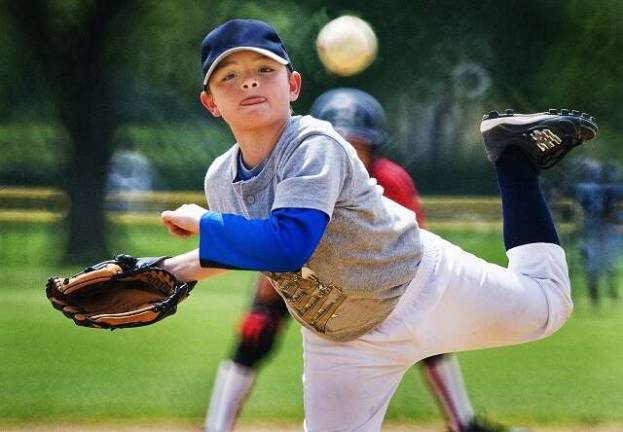Chest blow can stop even a young, healthy heart

It’s a rare but tragic event that occurs less than 20 times a year: teen athletes who are struck in the chest by a ball, causing their heart to stop. And it can be instantly fatal.
But as another baseball season gets underway, new standards for chest protectors will come into play designed to stop this rare phenomenon — called commotio cordis — based on findings by Dr. Mark Link, a UT Southwestern Medical Center cardiologist who has searched for answers for the past two decades.
Commotio cordis, which is Latin for “agitation of the heart,” is the second most common cause of sudden death in athletes, most often affecting teenage boys. Commotio cordis occurs when a healthy heart is stopped suddenly by a chance blow to the chest in between heartbeats.
The blow causes the heart to go into ventricular fibrillation, which is an uncoordinated quivering, and unless the heart is quickly shocked back into coordinated movement, the individual will die.
“One of the major goals of the work with commotio cordis was to determine how much stopping force would be needed to prevent this tragic condition and to develop a mechanical surrogate that could assess the ability of chest protectors,” said Dr. Link, Professor of Internal Medicine. "I believe we’ve achieved this goal."
Commotio cordis is known to cause 15 to 20 deaths a year, though the numbers are probably higher because of unrecognized and unreported incidents, Dr. Link said. Some 95 percent of cases occur in males, with the lion’s share of cases occurring in teenagers. There’s a drop-off at age 20.
“It’s thought that the age-dependent risk is due to hardening of the chest wall that occurs as you get older, as well as a decline in participation in sports played with balls after high school,” Dr. Link said.
Most incidents occur while youths are playing baseball, though other sports involving hard projectiles, such as hockey, lacrosse, and soccer, can be involved.
Preventing deaths from commotio cordis:
If a young athlete is struck in the chest with a hard object and goes into ventricular fibrillation, it is imperative that cardiopulmonary resuscitation (CPR) begin immediately. Below are some tips from the National Athletic Trainers Association on preventing commotio cordis deaths:
Educate coaches and parents to recognize the signs of commotio cordis and to understand the need for prompt action.
Encourage coaches and parents to become trained in CPR and the use of automatic external defibrillators (AEDs).
Identify the location of AEDs at athletic facilities.
Source: UT Southwestern Medical Center: utsouthwestern.edu/news